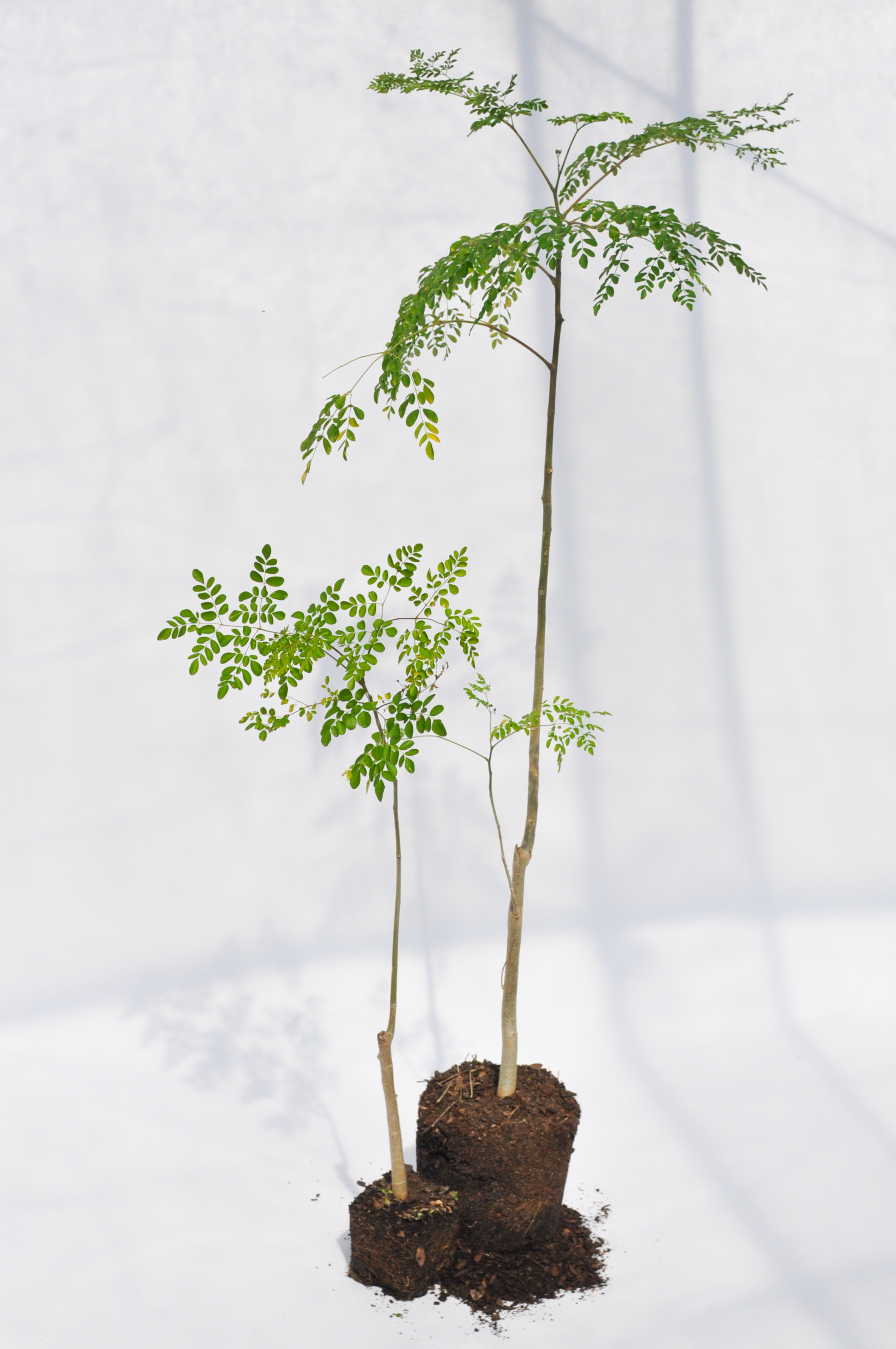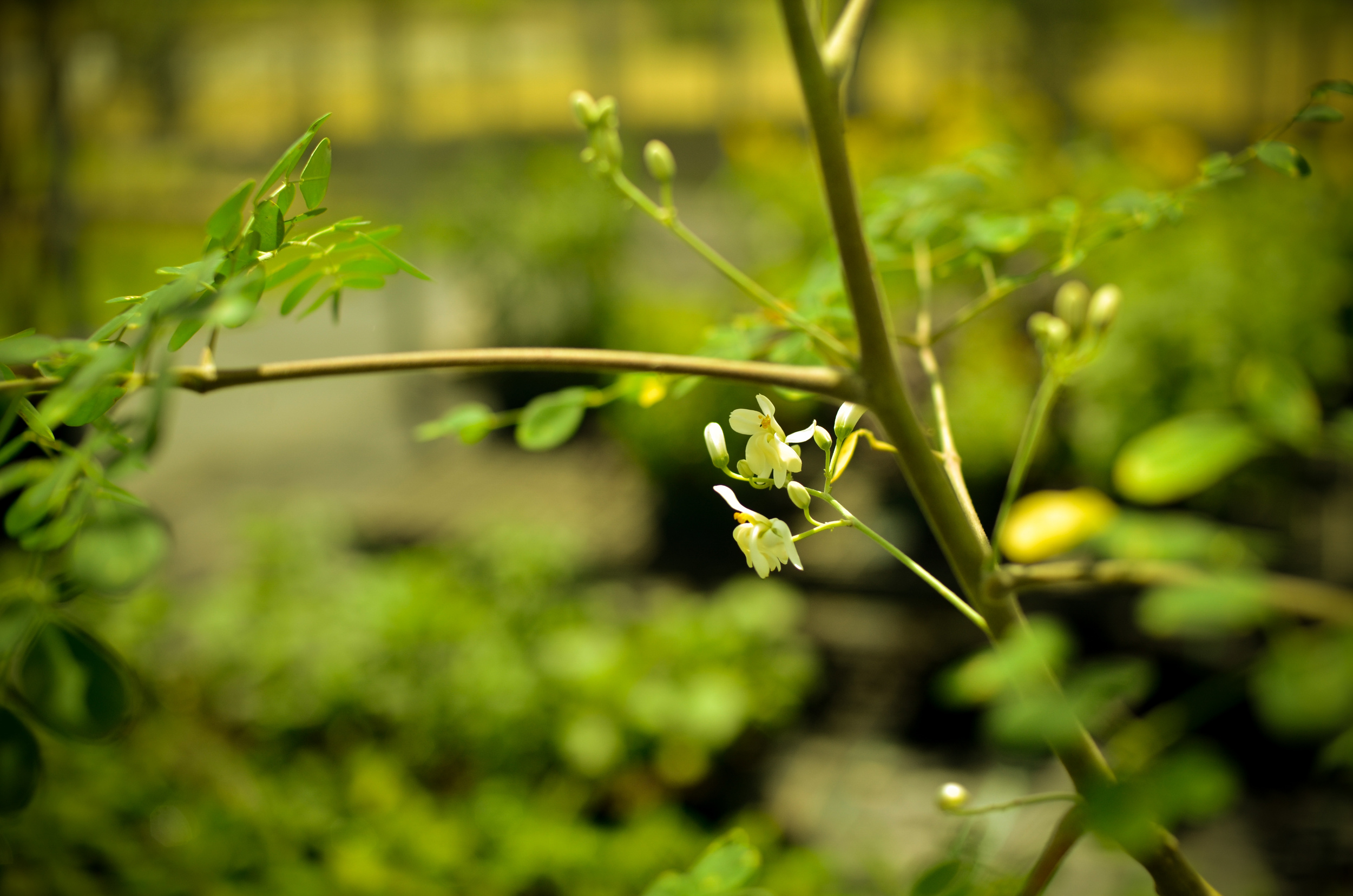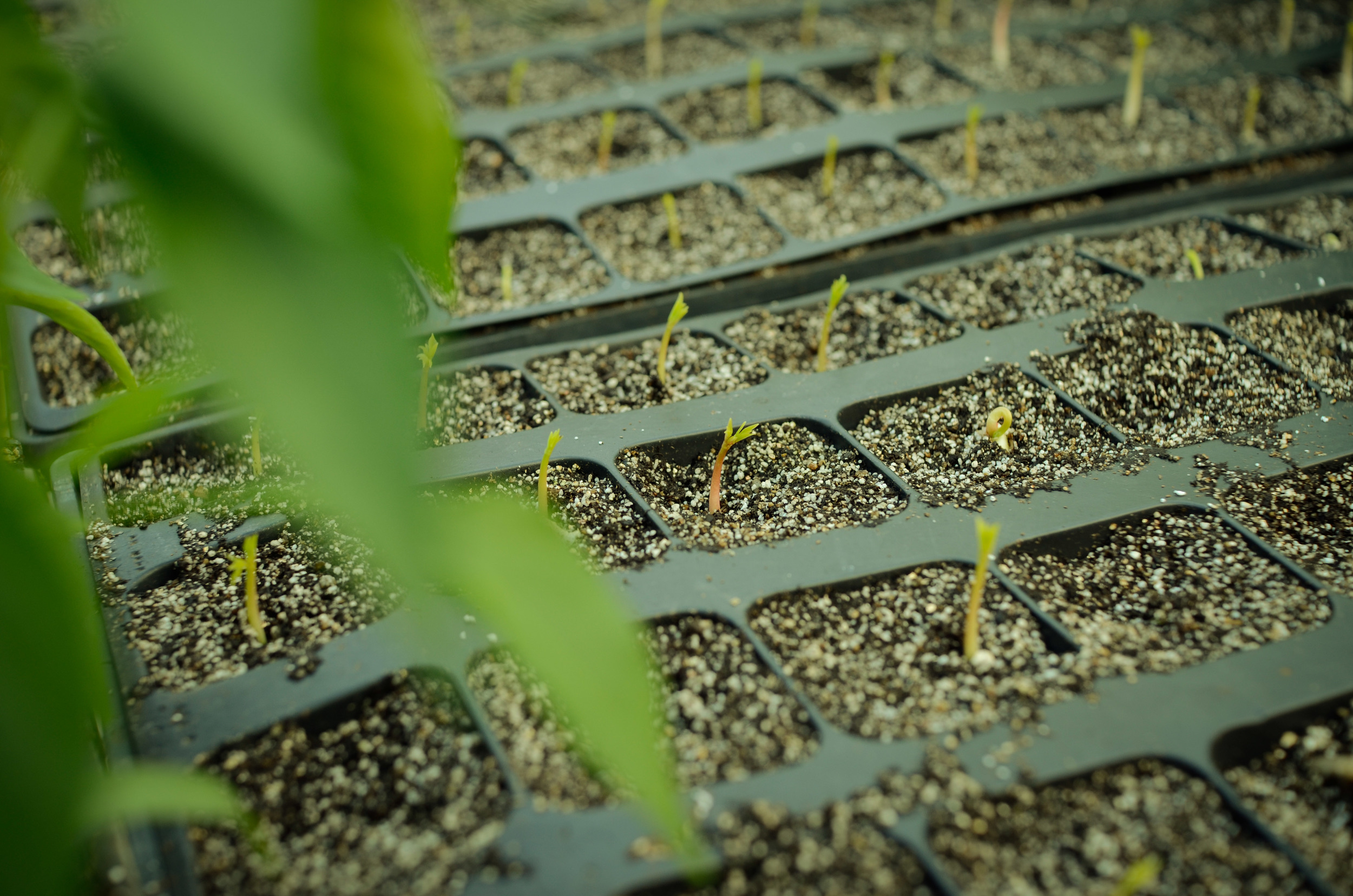Moringa oleifara
Drumstick Tree, Horseradish Tree
Moringa is becoming a savior in the plant world that is not only used for its high edible qualities like amino acids, minerals & as a multivitamin complex, but also for its soil regeneration benefits in permaculture design.
USDA Hardiness Zones: Hardy to zone 5 as an annual
Deciduous/Evergreen: Deciduous in Temparate Climates
Plant Type: Perennial
Years to Bear Fruit/Edible Qualities: Leaves, seed pods, roots and bark are all used for edible and herbal qualities. Leaves are eaten raw, cooked or dried in powder form. Seeds are pressed for the oil, ""Oil of Ben"", cooked and eaten like peas & also used to treat water as thys contain natural antibiotic & antifugal compounds. 50-150 milligrams of ground moringa seed will treat one liter of water. Seed pods are enjoyable when young & tender. Roots of moringa are used in teas and as extracts for inflammation & joint related pain.
Full Size: Can easily reach 15'-20' in one season; very fast growing
Cold Tolerance: Dormant during winter months if freezing conditions present, Central Florida moringa will die back in winter and return in spring if trimmed back.
Light Requirements: Full sun to Partial
Drought Tolerance/Watering: Virtually drought resistant, will grow just about anywhere, making this plant suitable for curbing malnutrition in anybody's diet
Soil & Site Requirements: Will grow in degraded sandy soils and rich soils alike. Can also adapt to below freezing conditions by returning in full force in the spring each year.
Links: https://www.youtube.com/watch?v=DxCbyoYl1Og In Depth Guide: http://moringafarms.com/wp-content/uploads/2014/05/Growing-Moringa-for-Personal-or-Community-Use.pdf
As a resilient & hardy pioneer plant, Moringa is a highly valued plant used in subtropical & tropical Agroforestry and Permaculture designs for famine inflicted & food desert regions.
With versatility in its edible qualities and useful properties, it is planted densely for human food, fodder and as a cash crop. Awesome growth in just one season provides nutrition to whole communities quickly and effortlessly.
Moringa is a fast growing crop and can be harvested from at nearly any age. Take only a few stalks of leaves from young trees - leave enough leaves for photosynthesis! Have as much as you can eat once established!
Leaves are harvested and used raw & dried in soups, salads & teas for their high protein content & nutrition - more so than any store bought leafy green. Dried leaves are often powdered, kept in long term storage and sold as supplements in many health food stores. Young pods are used raw like a green bean and mature pods are typically fried. Flowers are utilized in relaxing tea blends and seeds are used for their oil and water purification properties.
In our natural farming systems, we grow these plants around production & fruit trees as companion plants. Moringa converts nutrients & water deep in the soil into biomass, which we prune to use as mulch and fertilizer at the base of fruit trees. The tree's quick growth rate allows us to do this process twice er year.
Moringa interplanted with Peach & Fig trees, growth of over 20' in one season. These particular plants have been pruned back for use as mulch/fertilizer over 2 years.





